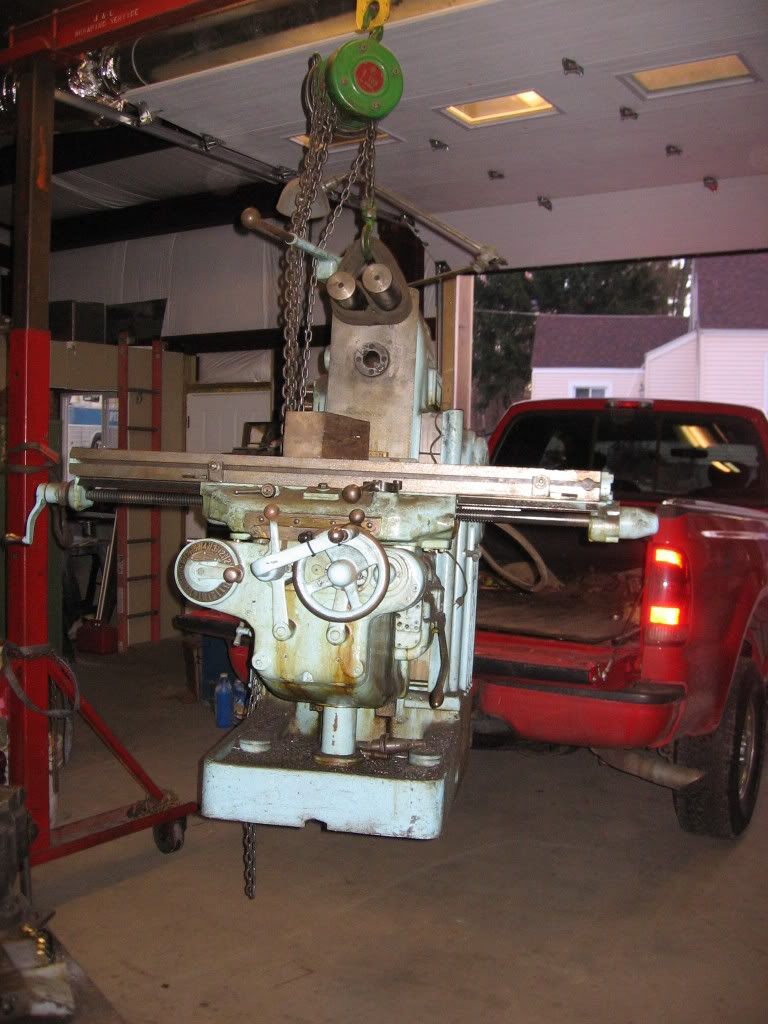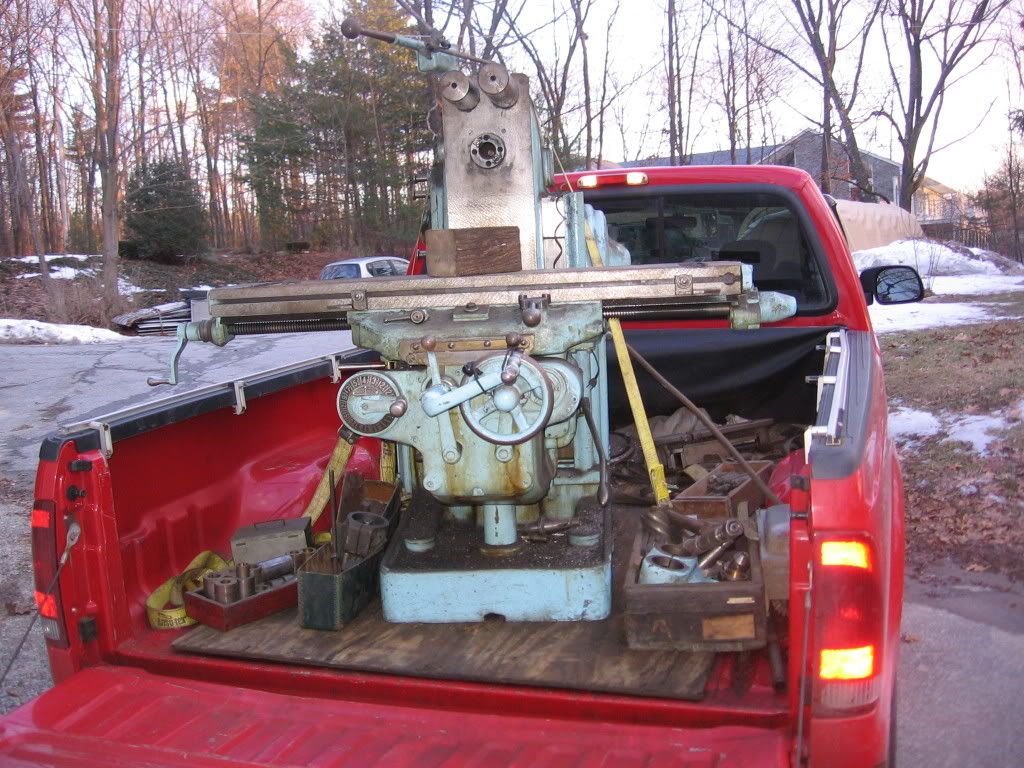Archie Cheda
Stainless
- Joined
- Dec 25, 2007
- Location
- San Luis Obispo, CA
K&T 2CH -- the mill I have wanted . . .
I am new to this forum, mostly posting in the Antique Machinery & History forum until now. Well, I am in the process of acquiring a K&T 2CH. (S/N: 7248 = 1954 -- thanks johnoder!) Right now I have to finish paying for it and bring it home -- I will post pics as soon as I can get some good ones. It is currently located in a warehouse behind tall piles of material -- I looked it over by standing on its table after climbing over all the junk around it. As soon as the way is cleared, I get to bring it home.
Over the last 25 years, in my former job of teaching manufacturing processes, I did more milling on K&T's than anything else except for Bridgeports. My first setup on a K&T was on a 2H universal, that was fully tooled, with low lead attachment (with all gears), model H dividing head, universal head (with drive gear!), slotting attachment, and rotary table. I used the slotting attachment and the dividing head to cut a 10-spline internal invoulte coupler for an old Renault transmission. The original coupling was stripped, but I had enough at the un-stripped end to make a form tool using an optical comparator. I did this job as a favor for a senior professor when I had only been in the department for about a year. It took half a day to make the tool, half a day to make the blank, and half the day to set up all the machine accessories -- I was doing this to become familiar with the machine. Then it only took an hour to make the part. The guy was delighted with the part and insisted on giving me $5 for my trouble! Later on I cut a helical gear -- no application, just for practice.
In addition to the 2H, we had a 3K, 2 or 3 K&T verticals, and a bunch of 1H’s which were to replace our five Index horizontal mills. When the decision was made to eliminate horizontal mills from the introductory machine shop course, the Indexes and the little K&T mills were all sold off. I continued giving the students exposure to horizontal mills -- every beginning student did a clean-up on the aluminum base of their air motor project with the part held in a fixture and a pos-pos carbide cutter throwing chips at the top rpm of the 2H. This was probably the highest material removal rate in the whole course!
I learned a bit of K&T lore I would share in a few more posts in this thread while I am waiting (impatiently) for my mill.
I am new to this forum, mostly posting in the Antique Machinery & History forum until now. Well, I am in the process of acquiring a K&T 2CH. (S/N: 7248 = 1954 -- thanks johnoder!) Right now I have to finish paying for it and bring it home -- I will post pics as soon as I can get some good ones. It is currently located in a warehouse behind tall piles of material -- I looked it over by standing on its table after climbing over all the junk around it. As soon as the way is cleared, I get to bring it home.
Over the last 25 years, in my former job of teaching manufacturing processes, I did more milling on K&T's than anything else except for Bridgeports. My first setup on a K&T was on a 2H universal, that was fully tooled, with low lead attachment (with all gears), model H dividing head, universal head (with drive gear!), slotting attachment, and rotary table. I used the slotting attachment and the dividing head to cut a 10-spline internal invoulte coupler for an old Renault transmission. The original coupling was stripped, but I had enough at the un-stripped end to make a form tool using an optical comparator. I did this job as a favor for a senior professor when I had only been in the department for about a year. It took half a day to make the tool, half a day to make the blank, and half the day to set up all the machine accessories -- I was doing this to become familiar with the machine. Then it only took an hour to make the part. The guy was delighted with the part and insisted on giving me $5 for my trouble! Later on I cut a helical gear -- no application, just for practice.
In addition to the 2H, we had a 3K, 2 or 3 K&T verticals, and a bunch of 1H’s which were to replace our five Index horizontal mills. When the decision was made to eliminate horizontal mills from the introductory machine shop course, the Indexes and the little K&T mills were all sold off. I continued giving the students exposure to horizontal mills -- every beginning student did a clean-up on the aluminum base of their air motor project with the part held in a fixture and a pos-pos carbide cutter throwing chips at the top rpm of the 2H. This was probably the highest material removal rate in the whole course!
I learned a bit of K&T lore I would share in a few more posts in this thread while I am waiting (impatiently) for my mill.
Last edited:





 , 2H.
, 2H.
